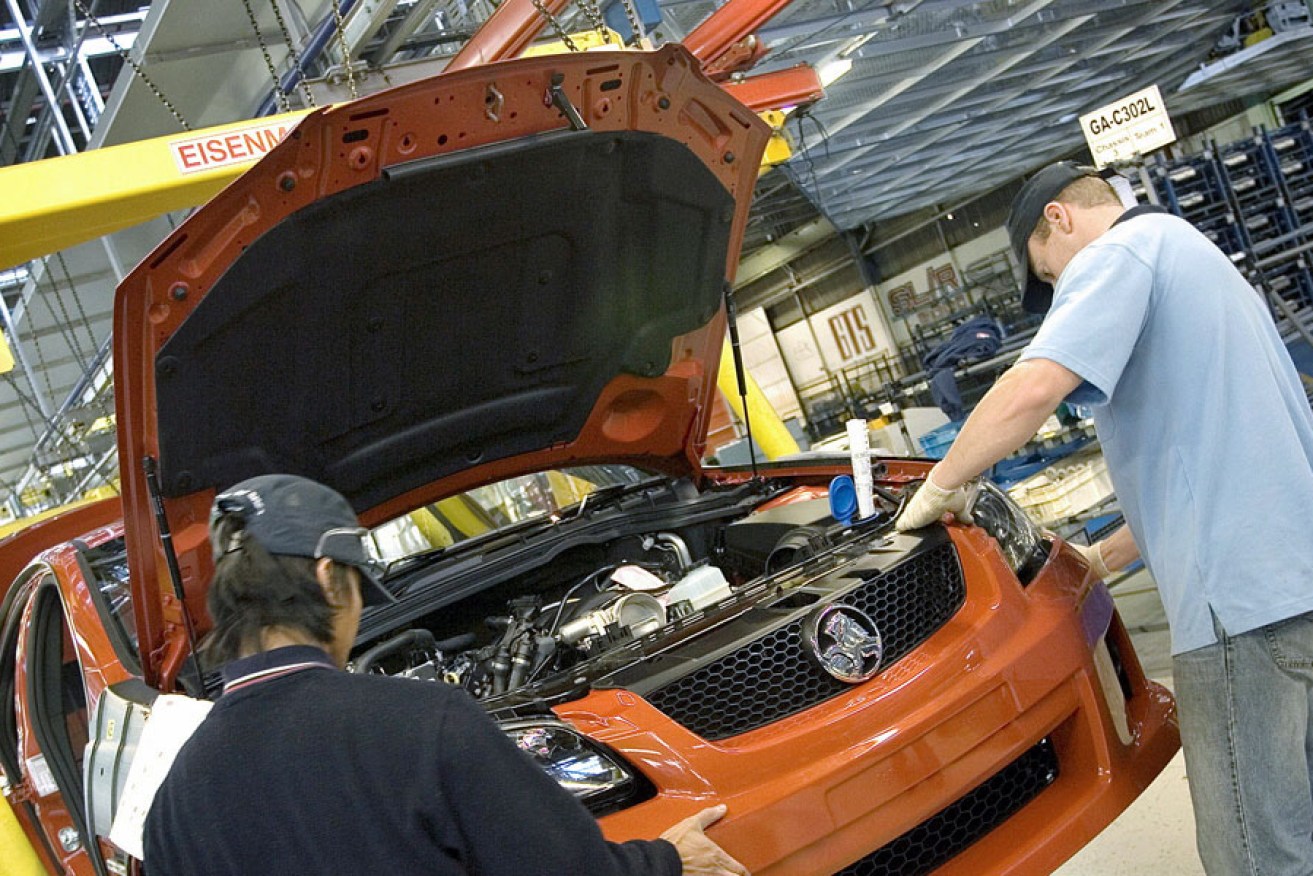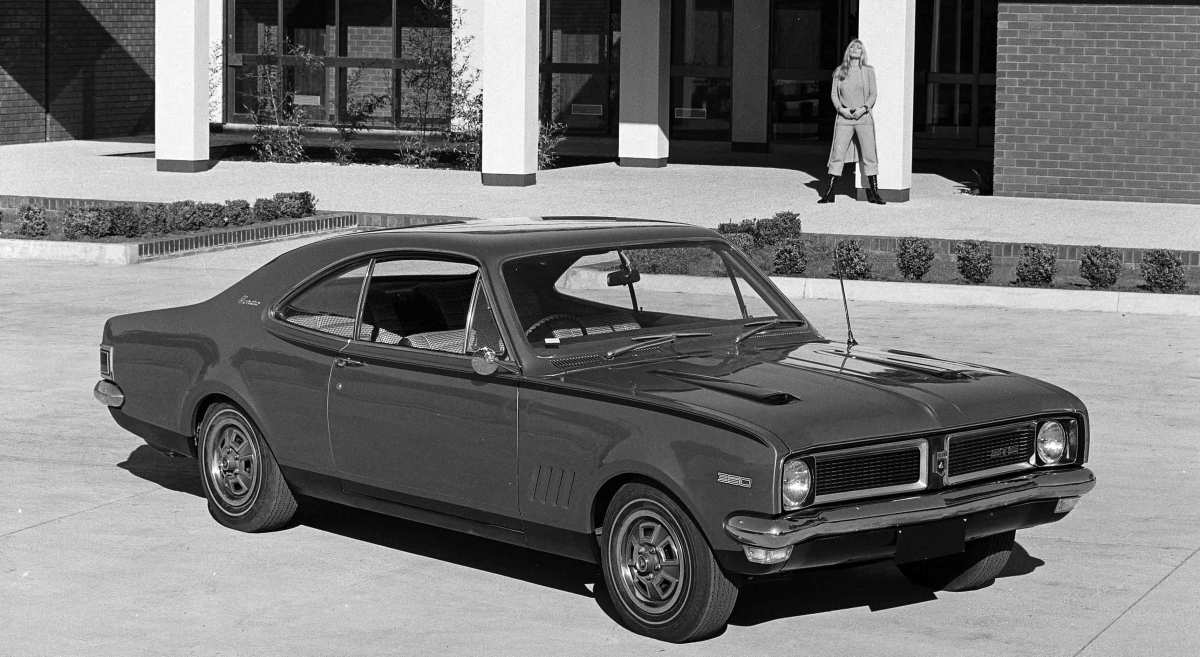In praise of the Holden worker

Workers on the line at Holden's Elizabeth factory.
The Holden cars of the 1950s, 60s and 70s were the masculine expression of freedom and sexuality; brooding six or eight-cylinder beasts that rumbled with power and passion.
While my Boomer nostalgia for gunning down the wide open road in an old Holden no longer resonates in the national psyche, there is even less political conviction for sustaining working class communities in South Australia, through the full-time employment of men.
The word “job” comes from 14th century English. It meant a lump or piece of something that could be carted around. “Flexibility” today brings back the arcane sense of the word as “lumps of labour” and pieces of work done over a lifetime. What sort of life narrative can one build surviving on dribs and drabs of work – or no work?
A good job is hard to find and worth holding on to. Holden provided good jobs.
The first thing that strikes you at the Holden Elizabeth plant is the agility of the workers. They are ambidextrous Picassos, snaking an arm under the dash to fit a part and weaving wiring through the firewalls of cars.
This skilled work is performed over 300,000 square metres of floor space, turning half a million parts a day from 650 different suppliers, into tens of thousands of cars in six body styles. Now the very notion of “making things” is scorned by economists and neglected by inner suburban soy latte types. If only the car industry looked like a panda, half a million inner suburbanites would rally to save it.
What we are witnessing is large numbers of men who have become the invisible unemployed. They are becoming strangers in their own land.
There’s nothing funny about the social, physical and mental health effects of long-term unemployment. It is the slow degradation of dignity and hope, including the pain of having to deal with recruiters, Job Services Australia and training providers.
The female workforce participation rate in South Australia has increased steadily from 44.3 per cent in June 1980 to 57.0 per cent in June 2015. Over the same period, the male workforce participation rate has declined from 77.7 per cent to 68.2 per cent. Male unemployment is currently just below 10 per cent and rising.
We have clasped the cold hand of the market in the false belief that progress lies in closing down factories – even though there is nothing to take their place. We have become little “Milton Friedmanites” in a state whose populace has turned “me to-ism” into an art form.
One of the key remedies for long-term unemployment is retraining and education. But Gail Gago, the Minister for Employment, Higher Education and Skills, has kicked the ladder of opportunity away from Holden and its supply chain workers, by making a bad training system even worse. She has to go.
Some South Australians revelled in shadenedfreude at the fall of an automotive giant, who offered dignified labour and a decent standard of living to generations of Australians. A review of media blog comments and letters to the editor(s) over the last 18 months revealed many people blamed the unions for Holden’s demise.
This is ridiculous. Union membership across Australia in the last 25 years has dropped from about 47 per cent of the workforce to 17 per cent. In SA, the “shoppies” and the Public Service Association have some sway but union bargaining power and authority is at an all-time low.
How did we ever become so high and mighty that we dared to hurl accusations at these tradesmen (and women) who made and continue to make, some of the finest cars in the world? We conceived children in these cars, and roared along deserted beaches feeling the tug of the infinite at the touch of the accelerator. The Monaro GTS 350 coupe should be hung in the Tate London or the Prado Gallery in Madrid as a work of art.
Sections of Adelaide’s media have also done a job on the northern suburbs battlers. From the moral high ground they’ve scripted them as child bashing, amphetamine-fueled, public housing vandals. It’s the 21st century version of “let them eat cake”.
Like turtles flipped onto their backs, many men who stop working struggle to get back on their feet. The labour market was changing before the GFC, but the decline of manufacturing and the “de-layering” of middle management has wiped out thousands of jobs for males. The ageing of the population means men are retiring out of the workforce, while others can’t get back in even if they wanted to.
What we are witnessing is large numbers of men who have become the invisible unemployed. They are becoming strangers in their own land.
As the late Professor Hugh Stretton said, you don’t need a degree in economics to know that mounting unemployment in South Australia has a treble effect on output and growth. Less goods and services are produced. Demand falls further as the fear of unemployment drives earners to save more by spending less. Low spending in turn discourages investment and the demand for capital goods and services.
Every job lost diminishes a man and affects his family but when the cold hand of the market threatens to destroy whole communities, we’re all bereft.
Malcolm King works in generational change. He is an Adelaide writer.





